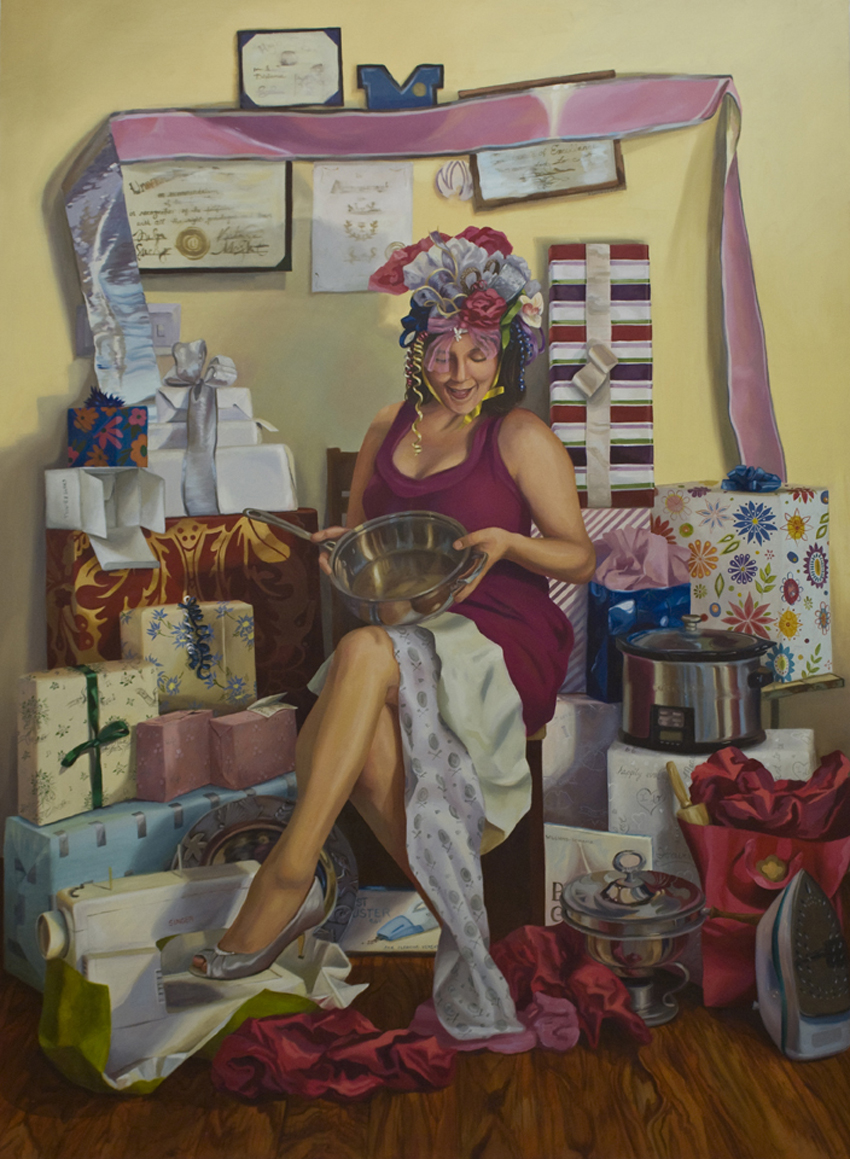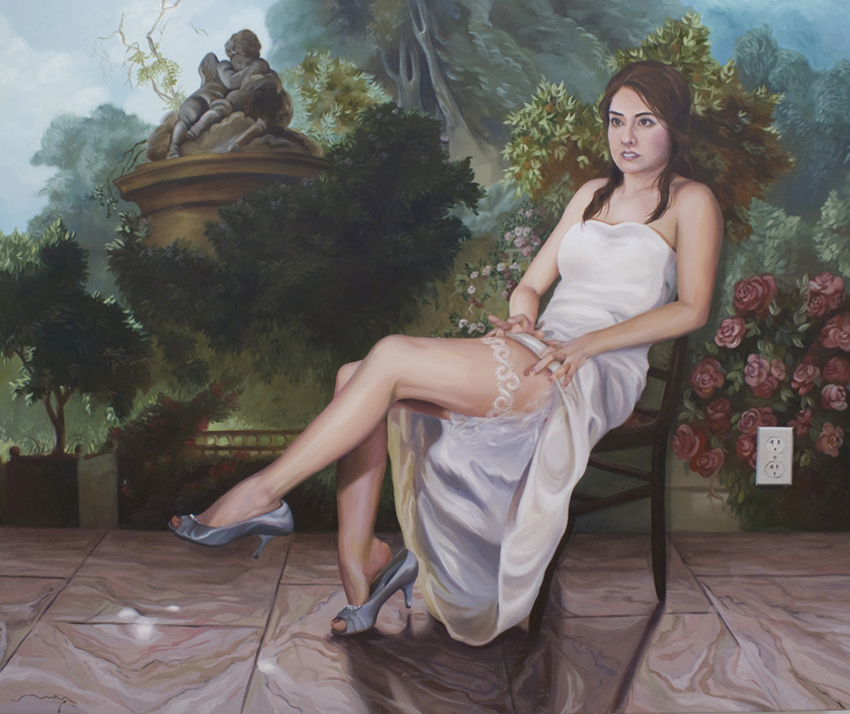Where Do Our Wedding Rituals Come From?

“All For Me? (Bridal Shower),” painted by Majkut in 2013. Oil on canvas. 68×50 inches. (Photo provided)
There is that beautiful point in every woman’s life when, suddenly, everyone seems to be getting engaged, and save-the-dates fill the mailbox. This moment is all too familiar to Katrina Majkut, whose Master of the Arts thesis exhibition, “Center of Attention,” is on display through July 27 in The Grossman Gallery at the School of the Museum of Fine Arts.
Majkut’s five-piece show is made up of three parts: oil paintings inspired by classical fine-art depictions of domestic women; “Gain, Feign, Feast”—a triptic depicting a bride fawning over her wedding ring, hung on “Put a Ring on It” wallpaper of Facebook snapshots of hands daintily flaunting engagement rings; and modernized embroidered “samples”—a traditional way for women to prove their domesticity.
The collection seeks the answer questions like, Why have we women had our wedding dresses picked out since we were five? Why are we willing to spend hours tasting hundreds of flavors of cake? And why are weddings one of the top five Pinned topics on Pinterest?
“I wanted to understand why we act this way,” says Majkut. “Why are we going through the motions if we know that, outside of a wedding, this is not necessarily aligned with our modern lifestyles?”
That is: why was it all the women Majkut knows are smart, educated, and professional, and yet one of her friends who was earning her PhD exclaimed with delight at her bridal shower, ‘A salad spinner!‘”
Wedding customs ignited a curiosity in Majkut, so she began researching the origins, traditions, and relationships associated with marriage and analyzed them on her blog, “The Feminist Bride.” In an attempt to rework these ideas in contemporary, political, and social contexts, Majkut tried to create positive solutions to problems many women face, as Majkut constantly hears, “I’m having this problem managing my wedding, what else can I do?”
Consider one of the weirder debates that Majkut has heard from brides: cake versus ice cream. When faced with one bride’s desire to stray from the traditional three-tiered number, Majkut found out that cake is not just dessert.
“It’s a symbol of sexual reproduction,” says Majkut. “Every slice you eat is supposed to get you that much closer to having children.”
This should actually be no surprise. “Every single tradition we have in weddings relates to sex, and therefore reproduction,” Majkut explains.
The most controversial issues—in terms of the ways women react to them and men treat them—are the engagement ring, the bridal shower, and name change. “Why don’t men wear an engagement ring?” asks Majkut. The Spartans were the first men to celebrate with bachelor parties, but women didn’t start celebrating their sexual freedom until the last few decades. “These things that people are so attached to—their origins are very interesting,” Majkut says.
Majkut isn’t a cynic, however. She loves the sanctity of marriage as much as the next girl, but understands that the strong women of today have a chance to reassess the typical double-standard and march down that aisle with a new sense of confidence—the type that Rosie the Riveter could get on board with.

“In Control,” one of Majkut’s cross-stitch pieces, delves into the issue of reproductive freedom, central to the idea of the domestic wife. (Photo provided)

“Crowned,” 2013. Oil on canvas. 41×50 inches. (Photo provided)


